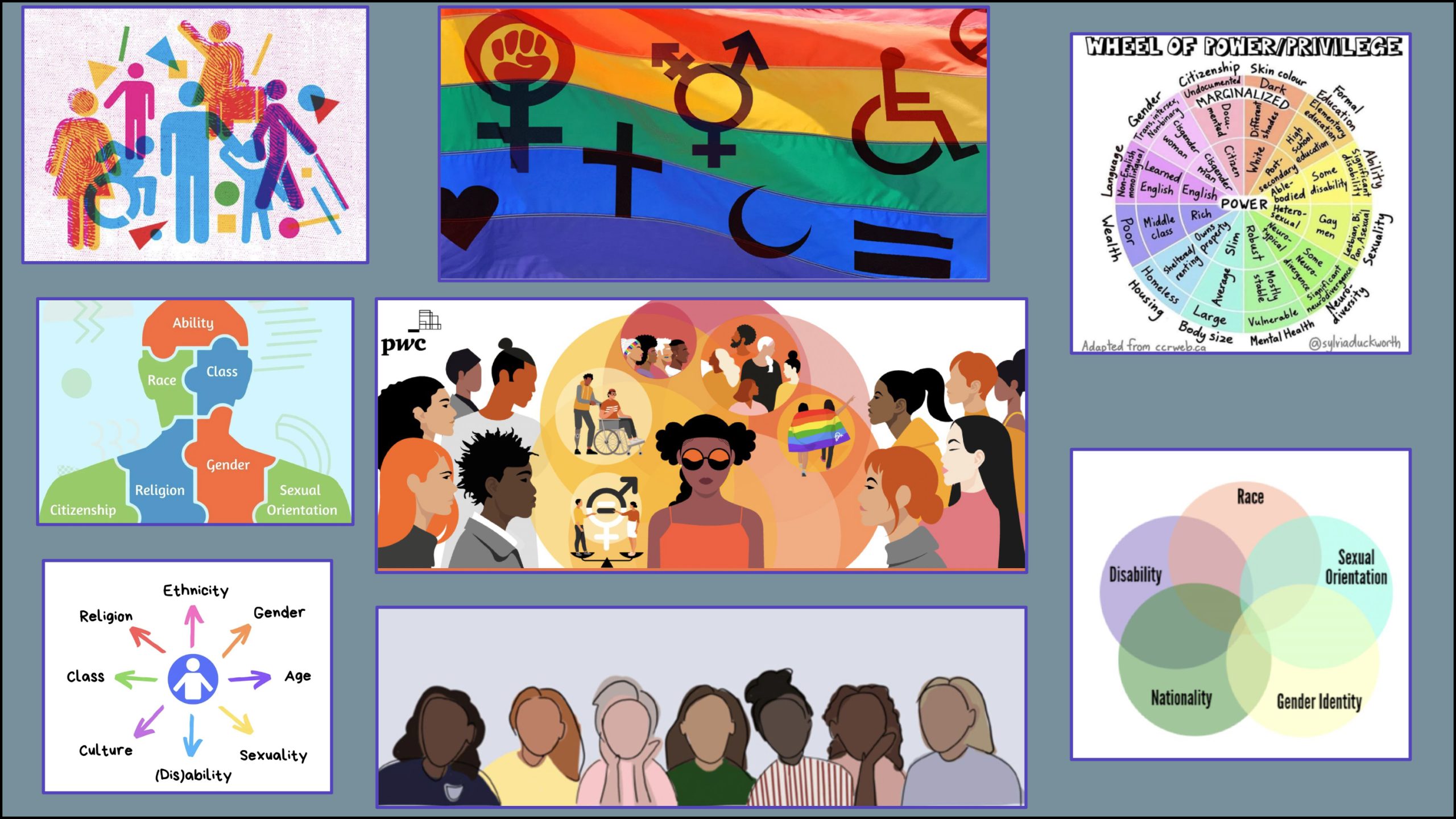3 Marginalized Identities

By Lindsey Barbosa
This digital collage focuses on the social justice issue of marginalized identities. The images in this collage represent students from various marginalized communities. Each image was intentionally and carefully selected to represent the diverse identities of the student population. The Oxford English Dictionary defines intersectionality as “the interconnected nature of social categorizations such as race, class, and gender as they apply to a given individual or group” (as cited in Eager, 2019). I chose to focus on identities that are marginalized for my digital collage as I recognize the unique daily challenges that students face based on different aspects of their identity. Students with marginalized intersecting identities face a variety of significant barriers to their emotional, social, and academic success (Eager, 2019).
In this course, we examined concepts of teaching for social justice using an activist approach. Zoric & Heyding (2014) state that a democratic and socially just education system that serves all equally and well is a key component toward the goal of social justice education. Reaching this goal requires educators to recognize that students have overlapping identities that can significantly impact their experiences at school and in life. As I reflect deeper on my understanding of intersectionality and its impact on education, it made me think about the content from week two when we looked at educational equity in Canada. According to a 2016 Census, 29% of the population of Ontario were immigrants, 29% were visible minorities, and 3% identified as Aboriginal Persons (Statistics Canada, 2019, as cited in Campbell, 2021). This growing and diverse population is reflected in our school systems and contributes to intersectionality amongst our students. To best support students with intersecting identities, I believe educators must view students’ identities through multiple lenses, explore ways to reduce barriers and strive to provide safe and inclusive environments for all learners.
References
Campbell, C. (2021). Educational equity in Canada: the case of Ontario’s strategies and actions to advance excellence and equity for students. School Leadership & Management, 41: 4-5, 409-428, DOI: 10.1080/13632434.2019.1709165
Eager, J. (2019). Supporting students’ intersecting identities. ASCD. https://www.ascd.org/el/articles/supporting-students-intersecting-identities
Zoric, T., & Heyding, C. (2014). Teaching for social justice using an activist approach. ETFO Voice. https://etfovoice.ca/feature/teaching-social-justice-using-activist-approach

